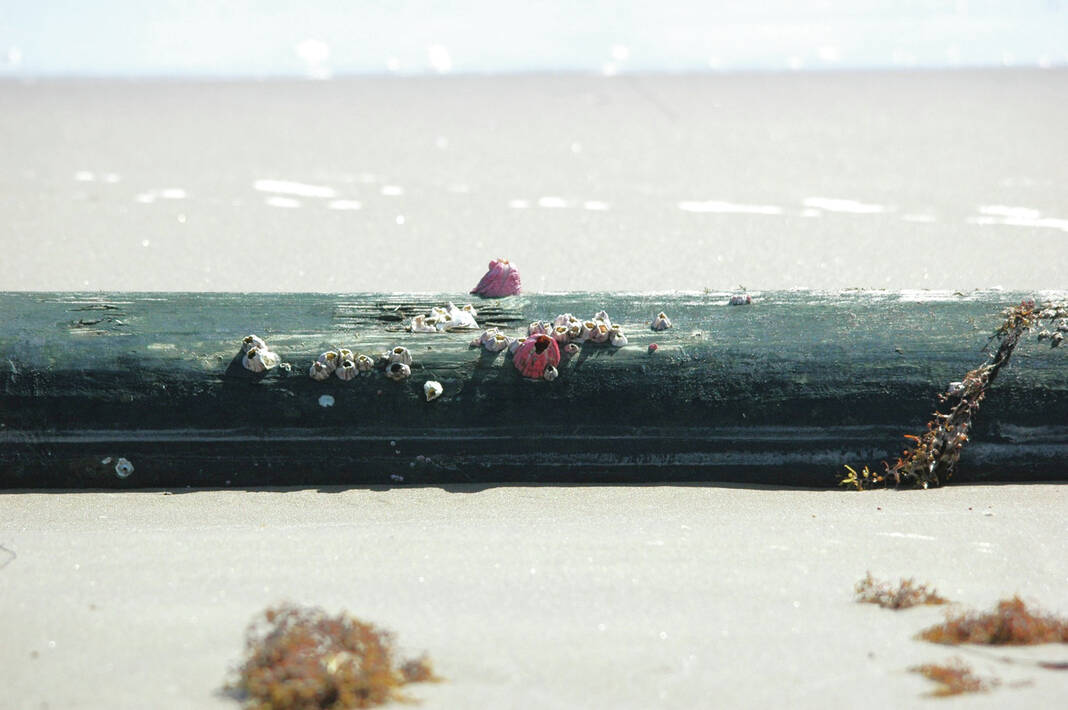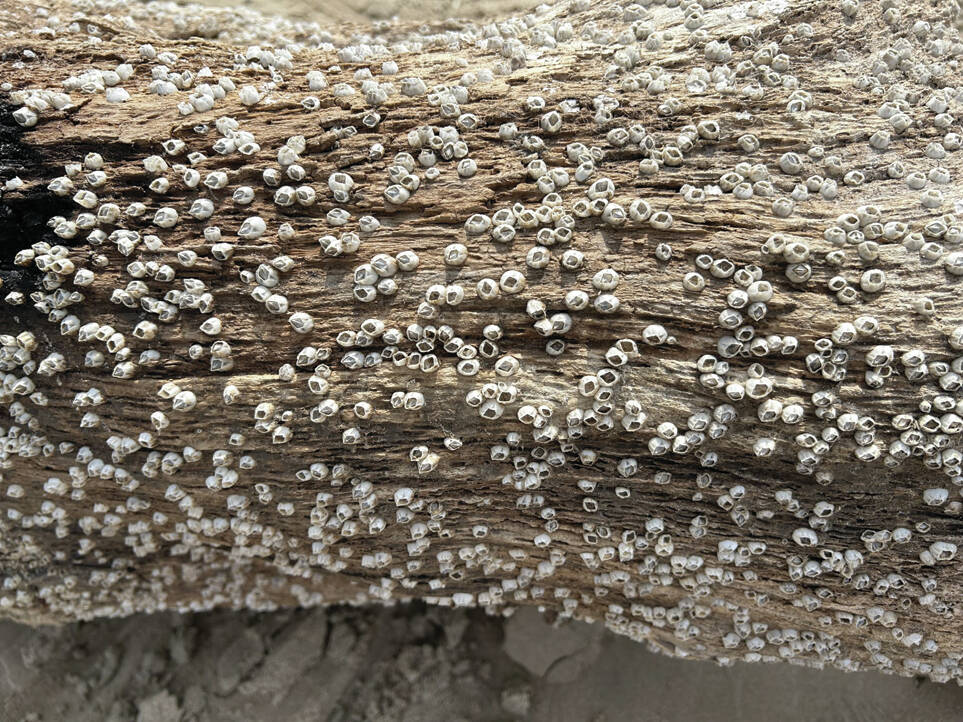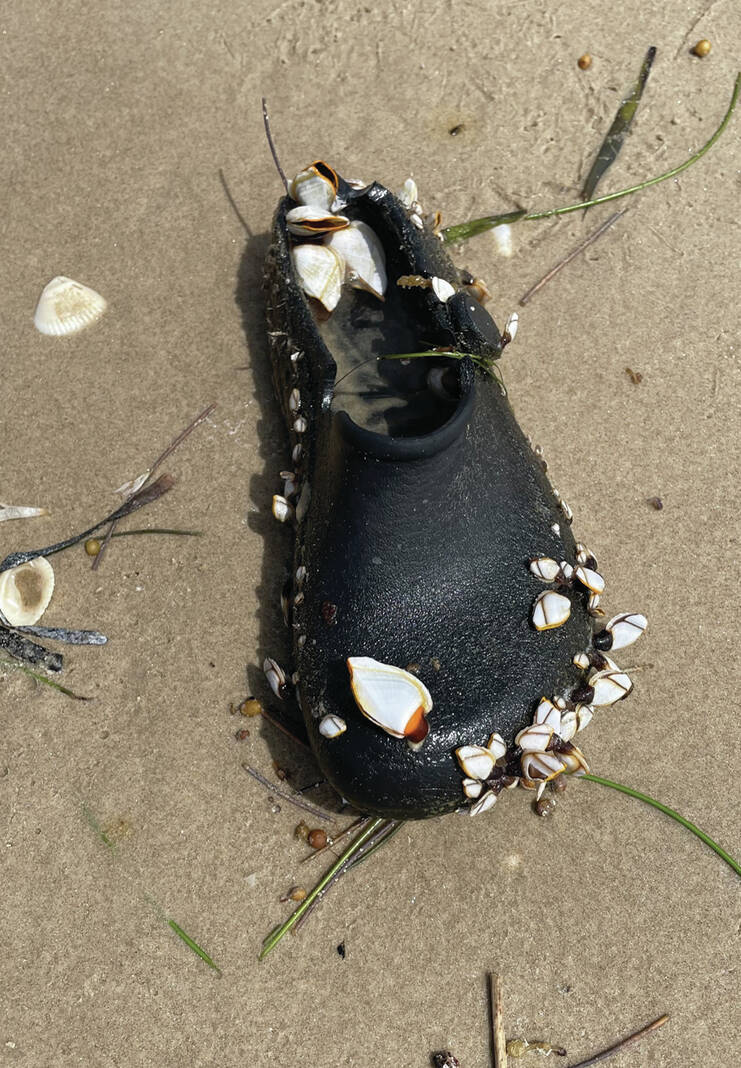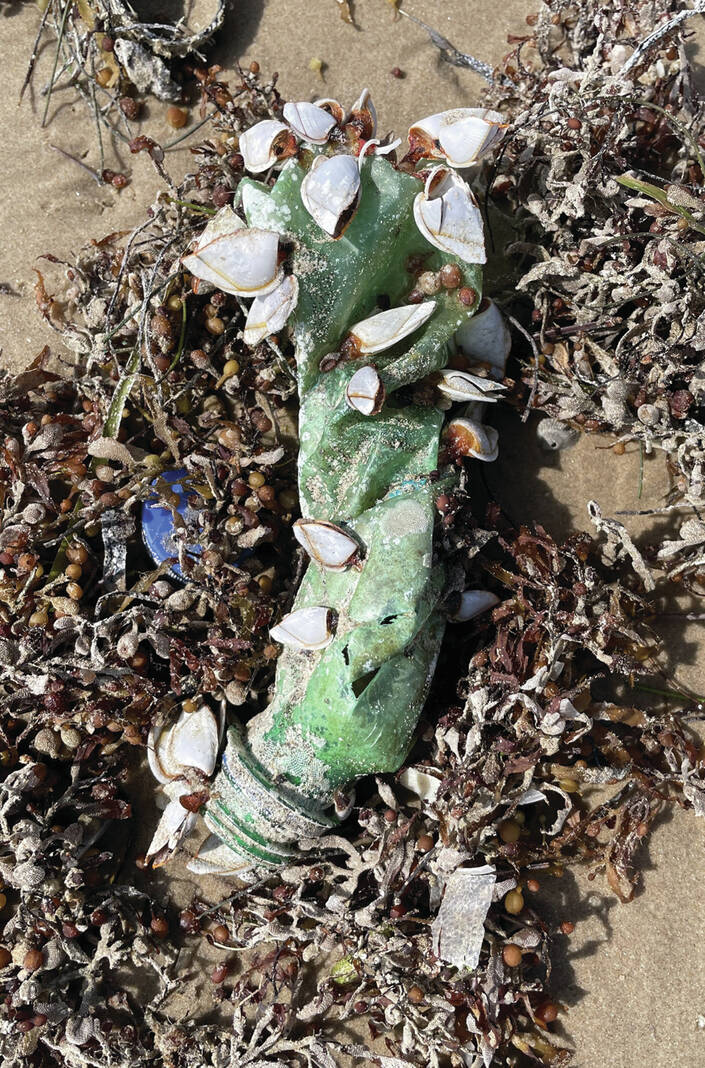|
Only have a minute? Listen instead
Getting your Trinity Audio player ready...
|
Barnacles are everywhere: bottom of boats, dock posts and pilings, buoys, shells, sea beans, driftwood, flotsam and other drift, even plastic trash. Nothing is safe from barnacles if it is solid and submerged in the sea.
The two most common types of barnacles that arrive on our Gulf shores, as passengers attached to various and sundry drift, are acorn and goose barnacles.
Acorn Barnacles are compact, typically cone shaped and symmetrical and often described as looking like tiny volcanoes. They attach their shells directly to a surface.

Goose Barnacles, also called stalked barnacles or gooseneck barnacles, have a long stalk, called a peduncle, the base of which is attached to the substratum. The main part of the body, the capitulum, is poised at the other end. The capitulum is enclosed in a toughened carapace, similar to that of acorn barnacles. The peduncle is muscular and capable of movement. Stalked barnacles are common on floating objects out at sea.
Barnacles are arthropods of the subclass Cirripedia in the subphylum Crustacea. They are related to lobsters, crabs and shrimp. They look like tiny shrimp in their larval stage, where they swim as members of zooplankton in the ocean.
Barnacles have two distinct larval stages. The first larval stage, called the nauplius, spends its time floating wherever the wind, waves, currents, and tides may take it, while it eats and molts. There are extensions on their head that help with their movement and they usually have one eye. This lasts for about two weeks until the second stage is reached.
The second larval stage is called the cyprid, where the nauplius metamorphosizes into a non-feeding organism which swims more strongly than nauplius. Cyprid has a mission: to find a good surface on which to settle and cement itself. It attaches itself by its antennas, secreting a fast-curing cement that is among the most powerful natural glues known. The barnacles’ secretion has been noted to have a tensile strength of 5,000 pounds per square inch and an adhesive strength of 22-60 pounds per square inch, according to an online article in the May-December 2017, issue of “The Coast Guard Proceedings, Journal of Safety & Security at Sea.”
Once attached, adult barnacles are sessile, meaning they cannot move.
Once barnacles go from their non-feeding larvae stage and cement themselves to their forever home, they eat using their six pairs of feather-like feet called cirri by rapidly extending and retracting them through the opening at the top of the barnacle; they comb the water for microscopic organisms.
Barnacles are omnivorous. They eat both plant and animal: plankton, phytoplankton (plants) and zooplankton (animals), but they only eat what swims and floats within reach of their cirri — and that’s plenty — barnacles don’t generally starve. They often settle in areas where other species of barnacles already exist because it is an area where there is plenty of food.
Barnacles have fascinated scientists, naturalists, artists, writers, photographers and beachcombers for centuries. An excellent identification guide to Texas marine organisms is at this link: https://txmarspecies.tamug.edu.
Anita Westervelt is a Texas Master Naturalist.







